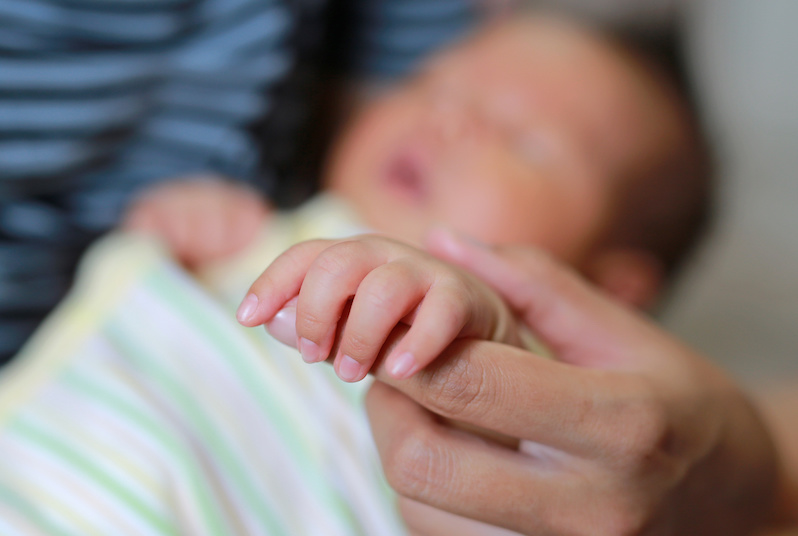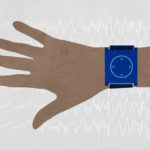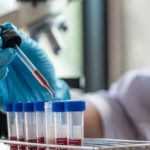A promising new antiseizure drug tailored to newborns

Neonatal seizures can lead to serious consequences, including significant cognitive and motor disabilities, lifelong epilepsy, and death. They are often highly resistant to treatment, in part because seizures in newborns are fundamentally different from seizures in older children and adults. Yet they are treated in much the same way as older patients, with little change over the decades.
Better treatment is clearly needed. In a recent prospective study, neurologist Janet Soul, MD, director of the Fetal-Neonatal Neurology Program at Boston Children’s Hospital, and colleagues at six other centers profiled newborns with clinically suspected or electrographic seizures. Of 426 consecutively admitted infants, 64 percent had seizures that didn’t respond to the initial antiseizure medication, 16 percent had status epilepticus, and 17 percent died in the neonatal ICU. Most important, higher seizure severity was associated with worse outcomes, including death.
Over the past decade, research led by Soul has supported use of a completely new seizure treatment — one that’s tailored to newborns’ uniquely excitable brains.
Repurposing an old drug
Overall, Soul’s work focuses on improving the treatment and outcome of neonatal seizures. About 10 years ago, she became interested in bumetanide, a drug that has been around for at least 40 years and has been used safely in infants as a diuretic.
“There was some interesting basic science work showing that one of the reasons newborns have seizures is because their chloride gradient goes in the opposite direction from that in older children and adults,” she says. “The big finding was that a chloride transporter called NKCC1 is very abundant in newborns’ brains. So their neurons have such a much higher chloride concentration than older children and adults.”
The most commonly used seizure drugs — benzodiazepines and, in babies, phenobarbital — open chloride channels. In adults and older children, this causes chloride to flow into the cell, with an inhibitory, seizure-dampening effect. But since newborns have much higher intracellular chloride concentrations, phenobarbital cause chloride to flow out of the cell, making neurons more excitatory and much more apt to fire.
“That’s exactly the opposite of what you want,” says Soul.
Bumetanide’s diuretic effect comes from blocking NKCC1 in the kidneys. In animal models, it blocked NKCC1 in the brain — and stopped seizures. Given its long safety record, Soul and her colleagues launched a pilot randomized trial to test bumetanide for seizures in newborns in 2009.
Reducing newborns’ seizure burden
The NIH-funded trial enrolled 43 newborns at Boston Children’s, Massachusetts General Hospital, Brigham and Women’s Hospital, and Tufts Children’s Hospital. All had refractory seizures of varied underlying causes.
“Our trial was the first to test a novel drug with an age-specific mechanism of action — a drug uniquely suited to the newborn brain,” Soul says. “It was also the first trial to employ a standard-therapy control group, which was key to measuring drug efficacy and safety.”
The trial randomized one group, with 27 newborns, to receive IV bumetanide (0.1 mg/kg, 0.2 mg/kg, or 0.3 mg/kg), added to standard phenobarbital therapy in a dose-escalation design. The control group, with 16 newborns, received phenobarbital plus doses of placebo (saline) so that investigators evaluating the newborns were unaware of which treatment they received.
Both groups underwent continuous EEG monitoring for the first four hours after drug administration. To add an extra level of rigor, the researchers accounted for differences in metabolism by measuring actual amount of the drug in the infants’ bodies.
Designing clinical trials for neonatal seizures
The results, published recently in the Annals of Neurology, showed a significantly greater reduction in seizure burden (minutes per hour of seizure activity) from baseline in the bumetanide-treated newborns as compared with the controls. The higher the bumetanide dose and amount of drug in the babies, the greater the effect.
Now, Boston Children’s is gearing up to lead a larger, more definitive Phase IIb bumetanide trial through the Network of Excellence in Neuroscience Clinical Trials (NeuroNEXT). The trial would test 0.3 mg/kg of bumetanide and possibly higher doses in a larger group of newborns.
In another recent paper, Soul and her co-authors offer recommendations on designing clinical trials to overcome the logistical challenges of drug testing in newborns with seizures — one of the reasons treatments have been slow to advance.
Stopping antiseizure medication sooner
Settling another long-standing question, Soul and her colleagues have also shown that it’s safe to stop antiseizure medication when seizures have resolved and babies leave the NICU. “This question has been debated for many years,” Soul says.
With collaborators in the Neonatal Seizure Registry, she conducted a comparative effectiveness study, published in JAMA Neurology in May. The study enrolled 303 newborns with seizures at nine centers and compared children whose antiseizure medications were stopped before NICU discharge versus several months later. At 2 years of age, there was no difference between the two groups in the recurrence of seizures or in developmental outcomes.
“There was a relatively low recurrence rate of seizures in the first two years after discharge, and even fewer infants had seizures within the first three months after discharge,” says Soul. “This is an important finding, since many physicians wait until three months of age to discontinue antiseizure medications.”
But Soul is especially excited about the bumetanide findings. “This has the potential to make a real impact on outcomes,” she says. “Everyone agrees that we need more effective treatments for seizures in newborns. It’s now a matter of developing and rigorously testing drugs that suit the unique characteristics of these seizures.”
Learn more about the Fetal-Neonatal Neurology Program at Boston Children’s.
Related Posts :
-

Predicting pediatric seizures with a wristband: Study shows what's possible
The ability to track seizures has a number of potential benefits: It could allow physicians to better determine optimal dosing ...
-

Small samples, big data: A systems-biology look at a newborn's first week of life
The first week of a baby’s life is a time of rapid biological change. The newborn must adapt to ...
-

Can we explain sudden infant deaths? It’s complicated.
Since the early 1990s, “Back to Sleep” campaigns have urged parents to place infants to bed on their backs to ...
-

Gene panel helps investigate sudden unexpected death in children
Almost 10 percent of pediatric deaths occur suddenly and without explanation. In this terrible situation, the first question many parents have ...





